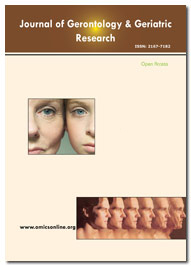Indiziert in
- Öffnen Sie das J-Tor
- Genamics JournalSeek
- SafetyLit
- RefSeek
- Hamdard-Universität
- EBSCO AZ
- OCLC – WorldCat
- Publons
- Genfer Stiftung für medizinische Ausbildung und Forschung
- Euro-Pub
- Google Scholar
Nützliche Links
Teile diese Seite
Zeitschriftenflyer

Open-Access-Zeitschriften
- Allgemeine Wissenschaft
- Biochemie
- Bioinformatik und Systembiologie
- Chemie
- Genetik und Molekularbiologie
- Immunologie und Mikrobiologie
- Klinische Wissenschaften
- Krankenpflege und Gesundheitsfürsorge
- Landwirtschaft und Aquakultur
- Lebensmittel & Ernährung
- Maschinenbau
- Materialwissenschaften
- Medizinische Wissenschaften
- Neurowissenschaften und Psychologie
- Pharmazeutische Wissenschaften
- Umweltwissenschaften
- Veterinärwissenschaften
- Wirtschaft & Management
Abstrakt
An Emergency Department Screen to Identify Older Adults at-Risk for Falls
Roberta A Newton, Dennis W Klima, Tina Brown Reid and Nina T Gentile
Background: The purpose of the study was to develop a preliminary Fall Risk Screening tool and determine the ability of the instrument to identify older adults with fall risk factors and those at-risk for future falls and fear of falling in the Emergency Department (ED).
Methods: The ED Fall Risk Screen was initially tested on 42 community-dwelling older adults in the ED who completed the screen and follow-up phases. The tool was subsequently revised by adding select physical performance tests and administered to a second cohort of 103 older adults on-site in the community. Three month follow-up was performed. Statistical analyses included logistic regression modeling for prediction of both falls and fear of falling.
Results: Fifteen of the ED patients (35.7%) had two major fall risk factors, including: previous falls, decreased leg strength, and balance and gait problems. On follow-up, three falls occurred in two people and 15.7% reported fear of falling. Of the 103 community living subjects (age: 79.3 ± 10.4 years) completing the 3-month follow-up, 76.7% had one or more major fall risk factors, 21 subjects had fallen, and 19% reported a fear of falling. Timed Up and Go Test performance slower than 12 seconds was an independent predictor of both falls and fear of falling among the community-living group (p<0.05). Select questions and objective balance and mobility tests predicted future falls by 70%, and fear of falling by 71%.
Conclusions: Older adults are discharged from the ED with known fall risk factors. Pilot testing of the Fall Risk Screen demonstrated psychometric capability to predict falls and fear of falling among community living older adults. A final version of the instrument will be tested in the ED to determine its sensitivity and specificity to predict both conditions in this setting. Older adults with fall risk factors should receive follow-up prevention strategies.